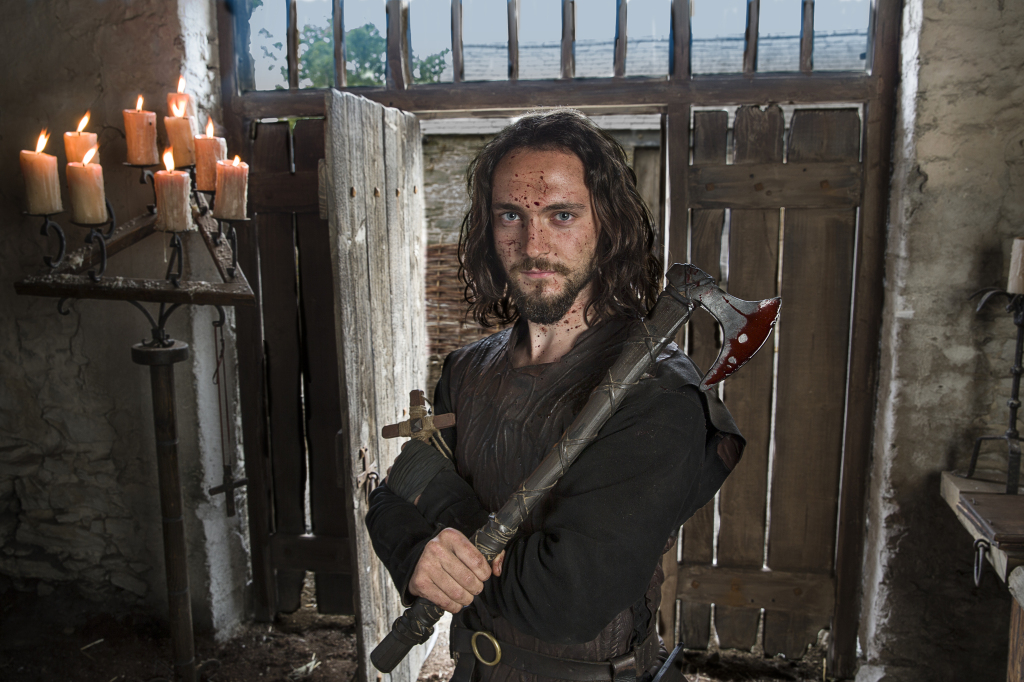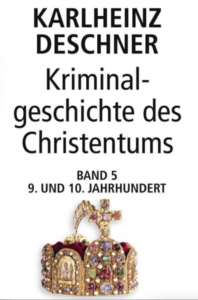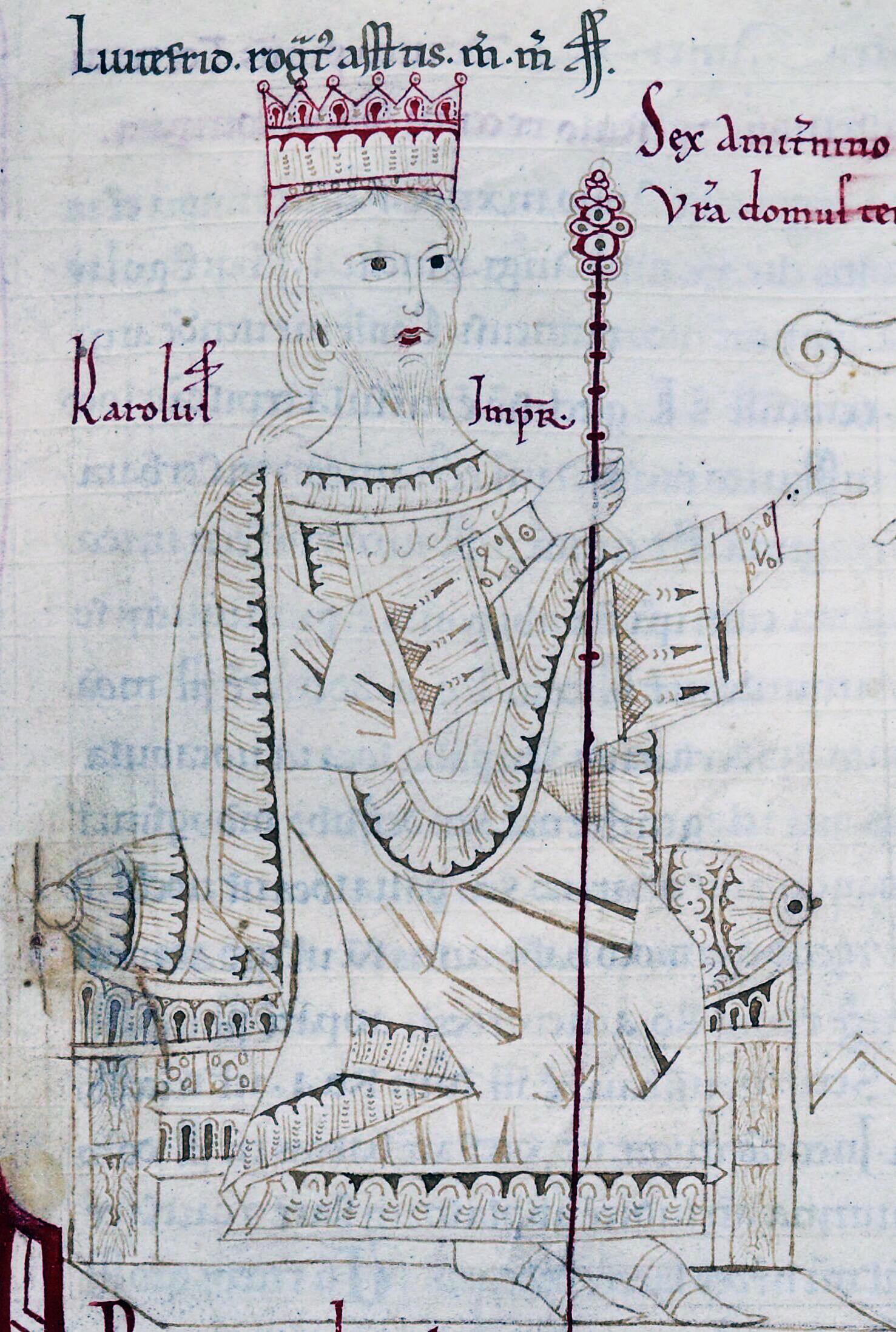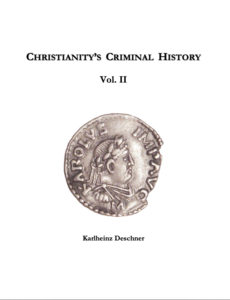Criminal History, 190
For the context of these translations click here.
PDFs of entries 1-183 (several of Karlheinz Deschner’s
books abridged into two) can be read here and here.
Divine providence operates in a murderous manner: the end of Norman rule in Friesland
Sometimes there were triumphs.
For example, against Gottfried. Through his agreement in 882 with Charles Christian, husband of King Lothar II’s daughter Gisla (fathered by Waldrada), he became ruler of the area that is roughly present-day Holland. When he was accused of conspiring against the empire with his brother-in-law Hugo, King Lothar II’s illegitimate son and Gisla’s brother, ‘God was against it,’ and ‘the Lord gave him the reward he deserved’ (Annales Fuldenses).
Divine providence did not operate openly.
The emperor – Gottfried’s godfather – had him murdered by one of his accusers, the East Frankish Count Henry, Poppo’s brother. Henry, ‘a very clever man’, who apparently concocted the plot, and Willibert, ‘the venerable bishop of Cologne’ (Regino von Prüm), meet the unsuspecting Gottfried ‘in the year of the divine incarnation 885’ on the island of Betuwe (between the Lower Rhine and the Waal). On the second day of the ‘negotiations’, Bishop Willibert summons Gottfried’s wife Gisla from the island in order to ‘stir up her zeal for peace’ elsewhere, while Henry’s companions secretly stab the king during the bishop’s pacifist endeavours elsewhere. As if that wasn’t enough, ‘all his companions, all the Normans who found themselves on the Betuwe, were also massacred.’
And only a few days later, Hugh, ‘who behaved imprudently in the emperor´s realm’ (Annales Fuldenses), was also lured to Gondreville, to the imperial court, on the advice of the same Henry, had his eyes gouged out by the same noble count and all his followers were deprived of their fiefs. Later, in the monastery of Prüm, where his grandfather Emperor Lothar I had already ended up as a monk, Hugo was shorn by Abbot Regino, who reported all this, and died after a few years, while his sister Gisla, Gottfried’s widow, ended her life in the nunnery of Nivelles near Namur.
A pious family.
The Norman regiment in Friesland came to an end at the time. They were defeated in battle with the Frisians near Norden ‘and many of them were killed’. And in the year of Gottfried’s death, the Fulda yearbooks again report:
Finally, the Christians raged against them with such bloodshed that few remained of such a large crowd. Then these same Frisians stormed their ships and found so many treasures of gold and silver, together with various implements, that everyone from the lowest to the highest became rich.
The old dream of mankind, including Christians: treasures of silver and gold! As if a camel wouldn’t go through the eye of a needle… But be that as it may, ‘Norman rule in Friesland ended without leaving any tangible traces’ (Blök).
Now the ‘men of the north wind’ had come to many countries in the early Middle Ages, including Iceland and Greenland, Spain, Morocco, Russia and Byzantium, and the Church fought them far and wide, bloodlessly and bloodily, through annalists, authors, bishops and popes. However, when the Normans, in the 11th and 12th centuries, provided the best cavalry armies in Europe, the bravest knights, and the most modern fortress builders (they developed the castle with ramparts and moat in the middle of the 11th century), when they also had a strong navy in Sicily, one of the most capable admirals of the Middle Ages in George of Antioch took the lead militarily, the papacy went over to them. They played a major role not only in the Crusades. ‘A people accustomed to war’, as William of Malmesbury said, who could ‘hardly live without war’, they were just right for the representatives of Christ.
Under Charles III the Fat, however, the ruler was not only criticised for his lack of fighting spirit towards them. Increasing insecurity at home, everyday highway robbery, notorious plundering, years of clan feuds, even and especially now in the East Frankish kingdom, none of this strengthened the emperor’s prestige.





